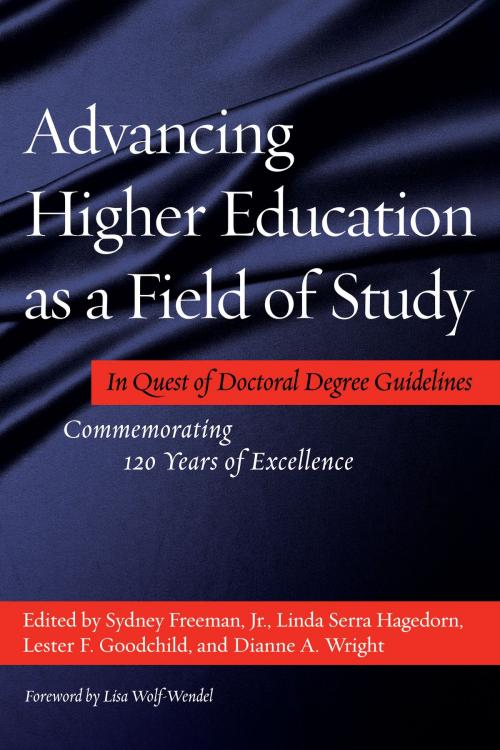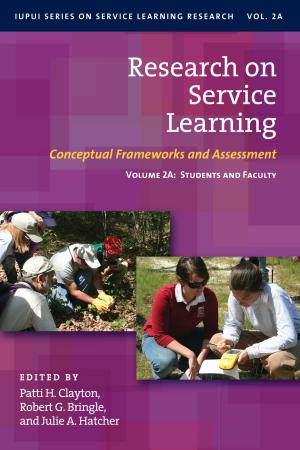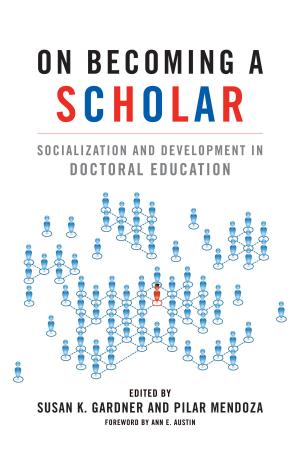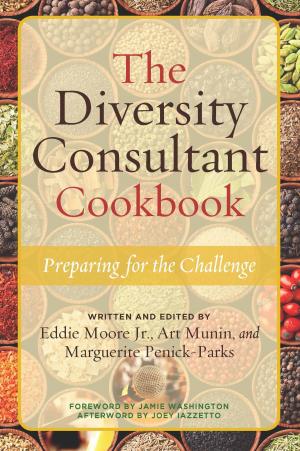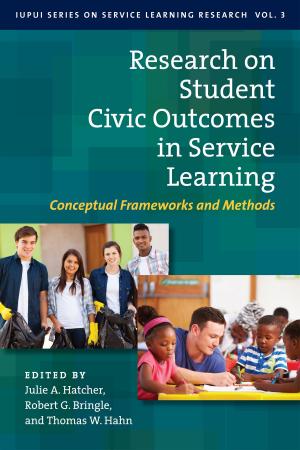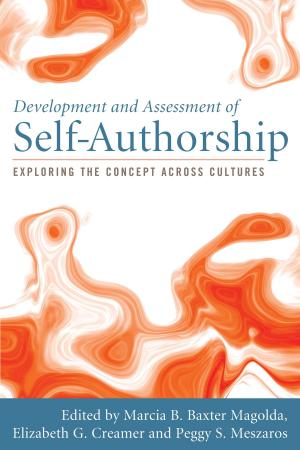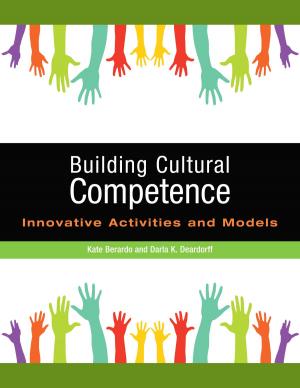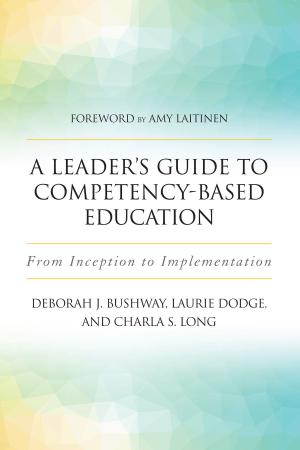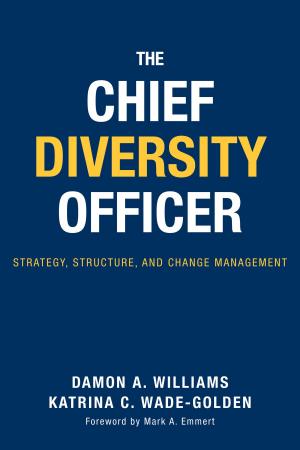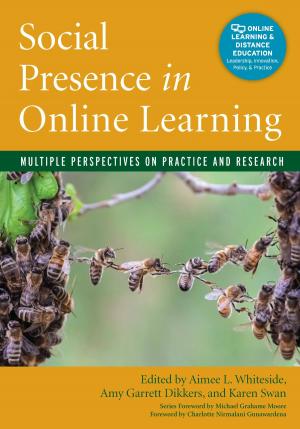Advancing Higher Education as a Field of Study
In Quest of Doctoral Degree Guidelines - Commemorating 120 Years of Excellence
Nonfiction, Reference & Language, Education & Teaching, Higher Education| Author: | ISBN: | 9781620361139 | |
| Publisher: | Stylus Publishing | Publication: | December 6, 2013 |
| Imprint: | Stylus Publishing | Language: | English |
| Author: | |
| ISBN: | 9781620361139 |
| Publisher: | Stylus Publishing |
| Publication: | December 6, 2013 |
| Imprint: | Stylus Publishing |
| Language: | English |
“Overall, the book will clearly be of interest to all faculty members who teach in higher education programs, doctoral students in the field, and also administrators at the Provost or Dean of Education level. It may also be of interest to researchers who study curriculum development – especially in a higher education context. This book raises important issues and perspectives in a time when we need to explore what the future holds for our field. The book should prompt important discussions that we must engage in earnestly. As more people are seeking degrees in our field and more programs are offering this degree, we ought to be asking ourselves these questions raised in this foreword and in this book. It is a good time to be asking these questions and this is the right book to prompt these discussions."—Lisa Wolf-Wendel, University of Kansas
Where is higher education as a field of study going in this century? How will higher education program leaders design and sustain their degree programs’ vitality in the face of perennial challenges from inside and outside the academy?
While in 1979 the Council for the Advancement of Standards in Higher Education (CAS) defined standards for student affairs master’s level preparation, and while 2010 saw the adoption of guidelines for higher education administration and leadership preparation programs at the master’s degree level, there still are, however, no guidelines that address higher education leadership doctoral programs, despite increasing demands for assessment and evaluation.
This book suggests that higher education administration doctoral degree guidelines are a critical next step in advancing their program quality and continuity. It offers a review of the field’s history, the condition of its higher education programs, developments from the student affairs specialization and its guidelines, and a multi-chapter dialogue on the benefits or disadvantages of having guidelines.
At a time of urgency to prepare the next generation of higher education faculty and leaders, this book sets out the parameters for the debate about what the guidelines should cover to ensure the appropriate and effective preparation of students. It also offers a useful framework for enriching the knowledge of deans, chairs, program coordinators and faculty who are engaged in program design, assessment, and revision. It will also be of interest to policymakers, the personnel of accrediting agencies, and not least graduate students within higher education preparation programs.
All the contributors to this volume have the exemplary expertise, leadership experience, and a close association with higher education guidelines and standards, and have extensively contributed to the literature on higher education.
Where is higher education as a field of study going in this century? How will higher education program leaders design and sustain their degree programs’ vitality in the face of perennial challenges from inside and outside the academy?
While in 1979 the Council for the Advancement of Standards in Higher Education (CAS) defined standards for student affairs master’s level preparation, and while 2010 saw the adoption of guidelines for higher education administration and leadership preparation programs at the master’s degree level, there still are, however, no guidelines that address higher education leadership doctoral programs, despite increasing demands for assessment and evaluation.
This book suggests that higher education administration doctoral degree guidelines are a critical next step in advancing their program quality and continuity. It offers a review of the field’s history, the condition of its higher education programs, developments from the student affairs specialization and its guidelines, and a multi-chapter dialogue on the benefits or disadvantages of having guidelines.
At a time of urgency to prepare the next generation of higher education faculty and leaders, this book sets out the parameters for the debate about what the guidelines should cover to ensure the appropriate and effective preparation of students. It also offers a useful framework for enriching the knowledge of deans, chairs, program coordinators and faculty who are engaged in program design, assessment, and revision. It will also be of interest to policymakers, the personnel of accrediting agencies, and not least graduate students within higher education preparation programs.
All the contributors to this volume have the exemplary expertise, leadership experience, and a close association with higher education guidelines and standards, and have extensively contributed to the literature on higher education.
“Overall, the book will clearly be of interest to all faculty members who teach in higher education programs, doctoral students in the field, and also administrators at the Provost or Dean of Education level. It may also be of interest to researchers who study curriculum development – especially in a higher education context. This book raises important issues and perspectives in a time when we need to explore what the future holds for our field. The book should prompt important discussions that we must engage in earnestly. As more people are seeking degrees in our field and more programs are offering this degree, we ought to be asking ourselves these questions raised in this foreword and in this book. It is a good time to be asking these questions and this is the right book to prompt these discussions."—Lisa Wolf-Wendel, University of Kansas
Where is higher education as a field of study going in this century? How will higher education program leaders design and sustain their degree programs’ vitality in the face of perennial challenges from inside and outside the academy?
While in 1979 the Council for the Advancement of Standards in Higher Education (CAS) defined standards for student affairs master’s level preparation, and while 2010 saw the adoption of guidelines for higher education administration and leadership preparation programs at the master’s degree level, there still are, however, no guidelines that address higher education leadership doctoral programs, despite increasing demands for assessment and evaluation.
This book suggests that higher education administration doctoral degree guidelines are a critical next step in advancing their program quality and continuity. It offers a review of the field’s history, the condition of its higher education programs, developments from the student affairs specialization and its guidelines, and a multi-chapter dialogue on the benefits or disadvantages of having guidelines.
At a time of urgency to prepare the next generation of higher education faculty and leaders, this book sets out the parameters for the debate about what the guidelines should cover to ensure the appropriate and effective preparation of students. It also offers a useful framework for enriching the knowledge of deans, chairs, program coordinators and faculty who are engaged in program design, assessment, and revision. It will also be of interest to policymakers, the personnel of accrediting agencies, and not least graduate students within higher education preparation programs.
All the contributors to this volume have the exemplary expertise, leadership experience, and a close association with higher education guidelines and standards, and have extensively contributed to the literature on higher education.
Where is higher education as a field of study going in this century? How will higher education program leaders design and sustain their degree programs’ vitality in the face of perennial challenges from inside and outside the academy?
While in 1979 the Council for the Advancement of Standards in Higher Education (CAS) defined standards for student affairs master’s level preparation, and while 2010 saw the adoption of guidelines for higher education administration and leadership preparation programs at the master’s degree level, there still are, however, no guidelines that address higher education leadership doctoral programs, despite increasing demands for assessment and evaluation.
This book suggests that higher education administration doctoral degree guidelines are a critical next step in advancing their program quality and continuity. It offers a review of the field’s history, the condition of its higher education programs, developments from the student affairs specialization and its guidelines, and a multi-chapter dialogue on the benefits or disadvantages of having guidelines.
At a time of urgency to prepare the next generation of higher education faculty and leaders, this book sets out the parameters for the debate about what the guidelines should cover to ensure the appropriate and effective preparation of students. It also offers a useful framework for enriching the knowledge of deans, chairs, program coordinators and faculty who are engaged in program design, assessment, and revision. It will also be of interest to policymakers, the personnel of accrediting agencies, and not least graduate students within higher education preparation programs.
All the contributors to this volume have the exemplary expertise, leadership experience, and a close association with higher education guidelines and standards, and have extensively contributed to the literature on higher education.
